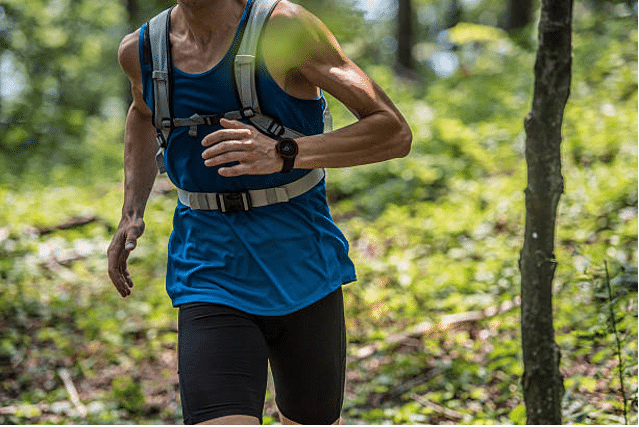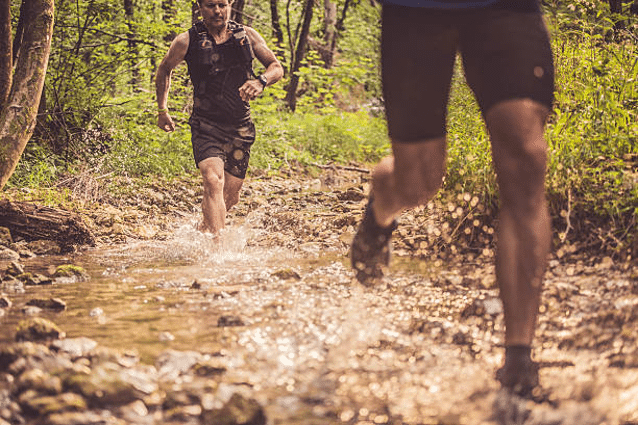Running requires the right gear, and one essential piece is your hydration setup. Staying hydrated keeps your body running efficiently and aids performance. This article explores two main options: running hydration packs and vests. Both have unique features catering to different running styles and needs. We’ll dive into the differences, benefits, and ideal usage situations to help you choose the best solution for your runs.
What Are Running Hydration Packs?
Running hydration packs are backpacks specially designed to hold water and are a popular choice among runners for several reasons:
- Basic Features: Hydration packs typically feature a water reservoir or bladder that holds a significant amount of fluid. They often include a drinking tube for easy access while on the move.
- Usage Scenarios:
- Ideal for longer runs or ultra-trail events where you need more water and gear.
- They are designed to be carried on your back, distributing weight evenly to reduce fatigue.
- Popularity: Many runners prefer packs for their larger capacity and supportive structure, making them essential for extended training or races.
For more detailed insights on hydration packs, check out this article, which covers their features and benefits comprehensively.
What Are Hydration Vests?

Hydration vests are specially designed gear like backpacks but sleeker and lighter. They are made to hold water bottles or small flexible water reservoirs and include pockets for other essentials. Run comfortably with easy access to hydration and essentials like snacks and keys.
Features That Differentiate Hydration Vests:
- Breathable Material: Made with lightweight, breathable fabrics for comfort.
- Secure Fit: Designed for a snug fit, reducing bounce during runs.
- Front Storage: Convenient pockets on the front for gels, phones, or other small items.
- Flexible Water Storage: Some come with a reservoir, while others use soft flasks.
Hydration vests are favored by trail runners and ultra-marathoners who require lightweight gear but with enough storage for longer distances.
For further details on available hydration vests, take a look at Orange Mud.
Comparing Hydration Packs and Vests
When choosing between hydration packs and vests, understanding their differences is crucial. Both types help runners stay hydrated, but their designs and functionalities suit different needs.
Design and Capacity:
- Hydration Packs:
- Designed like a backpack with a large reservoir, typically holding more water (up to 3 liters).
- Extra storage space for gear, ideal for longer trails or variable weather.
- Often larger and can be heavier than vests.
- Hydration Vests:
- Slim and lightweight with small water bladders or bottles.
- Less storage space, focusing on essentials for shorter or faster runs.
- Snug fit minimizes bounce.
Pros and Cons:
- Hydration Packs Pros:
- Ideal for long distances or all-day adventures.
- Hydration Packs Cons:
- Can be bulkier, leading to potential discomfort.
- Might lead to bouncing due to the larger size.
- Hydration Vests Pros:
- Lightweight and snug, reducing bounce and improving comfort.
- Easy to refill and access tools on the go.
- Hydration Vests Cons:
- Smaller water capacity may require more frequent refills.
- Limited space for extra gear.
Scenarios Where One Might Be Preferable:
- Choose a Hydration Pack: When planning extended runs, hiking trails or where you need to carry extra gear or food.
- Opt for a Hydration Vest: Perfect for races, short to medium trail runs where speed and comfort are key factors.
For a detailed comparison between hydration packs and vests, you can refer to The New York Times.
By understanding these differences, you can better decide which type fits your running activities and personal preferences best, ensuring comfort and adequate hydration during your runs.
Best Hydration Packs and Vests for Various Running Needs

Choosing the right hydration gear can make a big difference in your running experience. Whether you’re preparing for a marathon or tackling rugged trails, there’s a hydration solution out there for you. Here’s a look at some of the best options for different running needs:
- Marathon Running:
- A lightweight running hydration vest is ideal for marathons. Look for one with front pockets to hold gels and a small water reservoir.
- Example: Nathan VaporHowe 2.0 with a 12L capacity, known for its snug fit and breathability.
- Ultra Running:
- Ultra runs demand more storage. Consider an ultra running vest with a large reservoir and multiple compartments.
- Example: Salomon ADV Skin 12 offers a large hydration capacity and modular storage options, perfect for long adventures.
- Trail Running:
- A trail running vest should be stable with secure fitment for uneven terrains.
- Example: CamelBak Circuit Vest, which features a minimal design that remains secure even on technical trails.
- Best for Beginners:
- New runners may prefer a simple running hydration pack with basic features.
- Example: Osprey Duro 1.5 Hydration Pack is straightforward and includes enough storage and hydration for short to medium runs.
These are just starting points. The best choice depends on your specific running needs. Test out different options to see what feels right for you.
Key Considerations When Choosing Hydration Gear
Selecting the right hydration gear is crucial for enjoying a comfortable and successful run. Here are some key factors to consider for both hydration packs and vests:
- Comfort:
- The fit should be snug but not restrictive.
- Look for adjustable straps for a custom fit.
- Weight:
- Lightweight options are better for longer distances.
- Heavier packs can be cumbersome and cause fatigue.
- Storage Capacity:
- Ensure the capacity is sufficient for your hydration and gear needs.
- For longer runs, consider options with additional storage room.
- Ease of Use:
- Ensure easy access to water bottles or reservoirs while moving.
- Fit and Adjustability:
- Proper fit is crucial to prevent bouncing or chafing.
- Consider trying different styles and sizes before buying.
Here’s a quick checklist to help you choose the right gear:
- Does it fit snugly without bouncing?
- Can you easily access the water?
- Is there enough room for essentials like snacks, phone, and keys?
- Does it feel light enough for the distance you plan to run?
For more guidance, Backpacker Magazine offers expert advice to help you pick the right hydration gear. Remember, the best gear is the one that meets your unique needs and preferences.
How to Care for Your Hydration Gear
Taking good care of your hydration gear is essential to ensure it lasts and performs well. Here are some easy tips to keep your running hydration pack or vest in top shape:
- Cleaning Your Hydration Gear:
- Always follow the manufacturer’s instructions for cleaning.
- Rinse the bladder or bottle with warm water after every use to prevent bacteria and odors.
- Occasionally use a mild soap to clean thoroughly, making sure to rinse out all soap residues.
- For deep cleaning, you can use a mixture of baking soda and water or specialized cleaning tablets.
- Drying:
- Allow the bladder or bottle to dry completely before storing. This can be done by hanging it upside down.
- Use paper towels or a clean cloth to keep the opening propped open for better airflow.
- Storage:
- Store in a dry and cool place, away from direct sunlight to prevent material degradation.
- Keep the bladder or bottle inside out, if possible, to maintain airflow and prevent moisture build-up.
- Maintenance Tips:
- Check for leaks or damages regularly.
- Inspect straps and zippers for wear and tear and replace them if needed.
Wrap-up and Recommendations
Choosing between hydration packs and vests largely depends on personal preference and the type of running you engage in. Here’s a quick recap to help you decide:
- Hydration Packs are generally better for:
- Longer runs require more water and storage.
- Runners who prefer carrying their gear on their back.
- Hydration Vests are ideal for:
- Trail runners who prefer a snug fit.
- Those who seek a more balanced distribution of weight.
Try both types to see which suits your preferences and needs best. Your comfort and hydration during runs are paramount, so explore different options to find what works for you.
For more information on products and to explore a wide range of hydration gear, visit our client’s website and discover the right companion for your next run.
